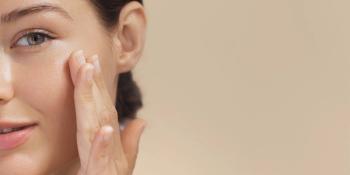
How do topical and ingestible skincare products compare?
And which nutricosmetic ingredients look most promising today?
In the 1800s, arsenic was a popular skin-beautification ingredient. It was thought to make the skin clear and pale, two desirable traits in the Victorian era. The industry has come a long way since then. Today, some, though not all, ingredients for the skin are safe enough to be ingested.
Topical Versus Ingestible Beauty Products: What to Know
Though some ingredients for skincare are safe to eat, topical and ingestible skincare products differ in how they nurture the skin, hair, and nails, says innovation and formulation expert of nutricosmetics, Paula Simpson of Nutribloom Consulting (New York, NY).
Acute and topical interventions protect and support barrier function and the epidermal layer, and they work acutely on the area where they’re applied to, she notes. By contrast, “Ingestible beauty works systematically,” says Simpson, “taking a ‘whole-body approach’ versus acute application.”
Results typically take longer with ingestible beauty products, Simpson notes, but they tend to be longer-lasting. She recommends a bidirectional beauty approach in which both ingestible and topical beauty products are used simultaneously.
Global sales and marketing manager of BioCell Technology LLC (Irvine, CA), Douglas Jones, would agree. “Both topical and ingestible products have a place in the market,” he says. “Cosmeceutical products have been showing great growth during the pandemic as so many of us spend hours each day on camera for meetings.”
A key consideration for anyone interested in either type of beauty product: “What I think is important for both ingested and topical products is that there is clinical evidence for the claims that are made,” says Jones.
Trends in Topical Beauty: Beyond TikTok
Though TikTok is quickly becoming a valued source of information for Gen Z and other consumers, it’s important to remember that social media isn’t the most reliable place to get health information. That includes beauty and skincare tips. Snail facials and nose blush—two TikTok trends in 2021—may be harmless, but getting science-backed information about what goes onto delicate facial skin is always a good idea.
Collagen peptides, for instance, are a “tried and true” ingredient in the skincare industry, says Liz Clarke, CFS, technical marketing manager at Nitta Gelatin NA Inc. (Morrisville, NC). Clarke states that current research supports the effectiveness of collagen peptides, which are best utilized when ingested.
“Most ‘collagen’ used in topical applications is too large to penetrate the dermal barrier,” says Clarke. “However, product development is ever-evolving, and there are certainly opportunities for purified collagen-derived di- and tripeptides to make their mark.”
Clarke states, “Our R&D headquarters in Japan has recently confirmed skin permeability of purified collagen-derived dipeptides, including proline-hydroxyproline and hydroxyproline-glycine. In human clinical trials, it was determined that lotion containing these dipeptides applied twice daily actually improved barrier function,” she explains. “That being said, benefits from ingestion don’t require purification of the larger collagen peptide molecule for efficacy.”
The Future of Topical Beauty
What lies ahead in the world of topical beauty products? Simpson states that fermented beauty is one trend she imagines will continue to gain momentum. “Moving along with the fast-moving microbiome space, there is interesting research coming out on fermented natural ingredients in both topical and ingestible studies,” says Simpson.
She notes that a recent study looked at fermented pomegranate extract taken as a supplement and applied topically.1 “The findings showed improvements in collagen density, brightness, and moisture retention in participants after eight weeks of use,” says Simpson.
Another popular trend Simpson sees is intimate feminine care via microbiome health. Simpson notes that using pre-, pro-, or postbiotics in topical and oral formulations to support vaginal health and aging is becoming more prominent in the natural health and beauty space. “One study, for example, looked at the use of oral supplementation, but there are more utilizing topical interventions as well.”2
According to Globe Newswire, the global cosmetic skincare market was valued at US$ 55 billion in 2020. That number is expected to increase to US$ 89.6 billion by the end of 2027, with a CAGR of 7.1% during 2021-2027 alone.3 Clearly, the topical skincare product market has room for continued growth.
References
- Chan, L. P.; Tseng, Y. P.; Liu, C., Liang, C.H. Fermented Pomegranate Extracts Protect Against Oxidative Stress and Aging of Skin. J Cosmet Dermatol. 2022, 21 (5), 2236-2245. DOI:
10.1111/jocd.14379 - Koirala, R.; Gargari, G.; Arioli, S.; et al. Effect of Oral Consumption of Capsules Containing Lactobacillus paracasei LPC-S01 on the Vaginal Microbiota of Healthy Adult Women: A Randomized, Placebo-Controlled, Double-Blind Crossover Study. FEMS Microbiol Ecol. 2020, 96 (6), fiaa084. DOI:
10.1093/femsec/fiaa084 - Globe Newswire. “Global Cosmetic Skin Care Market Size-Share (2022-2027) | Growing At CAGR of 7.1% | Supermarkets and Grocery Retailers Demands, Regional Overview, Sales Revenue, Business Prospect, Growth Opportunity, Challenges, and Potential Benefits.” Published April 7, 2022.
https://www.globenewswire.com/news-release/2022/04/07/2418713/0/en/Global-Cosmetic-Skin-Care-Market-Size-Share-2022-2027-Growing-At-CAGR-of-7-1-Supermarkets-and-Grocery-Retailers-Demands-Regional-Overview-Sales-Revenue-Business-Prospect-Growth-Opp.html
Newsletter
From ingredient science to consumer trends, get the intel you need to stay competitive in the nutrition space—subscribe now to Nutritional Outlook.





